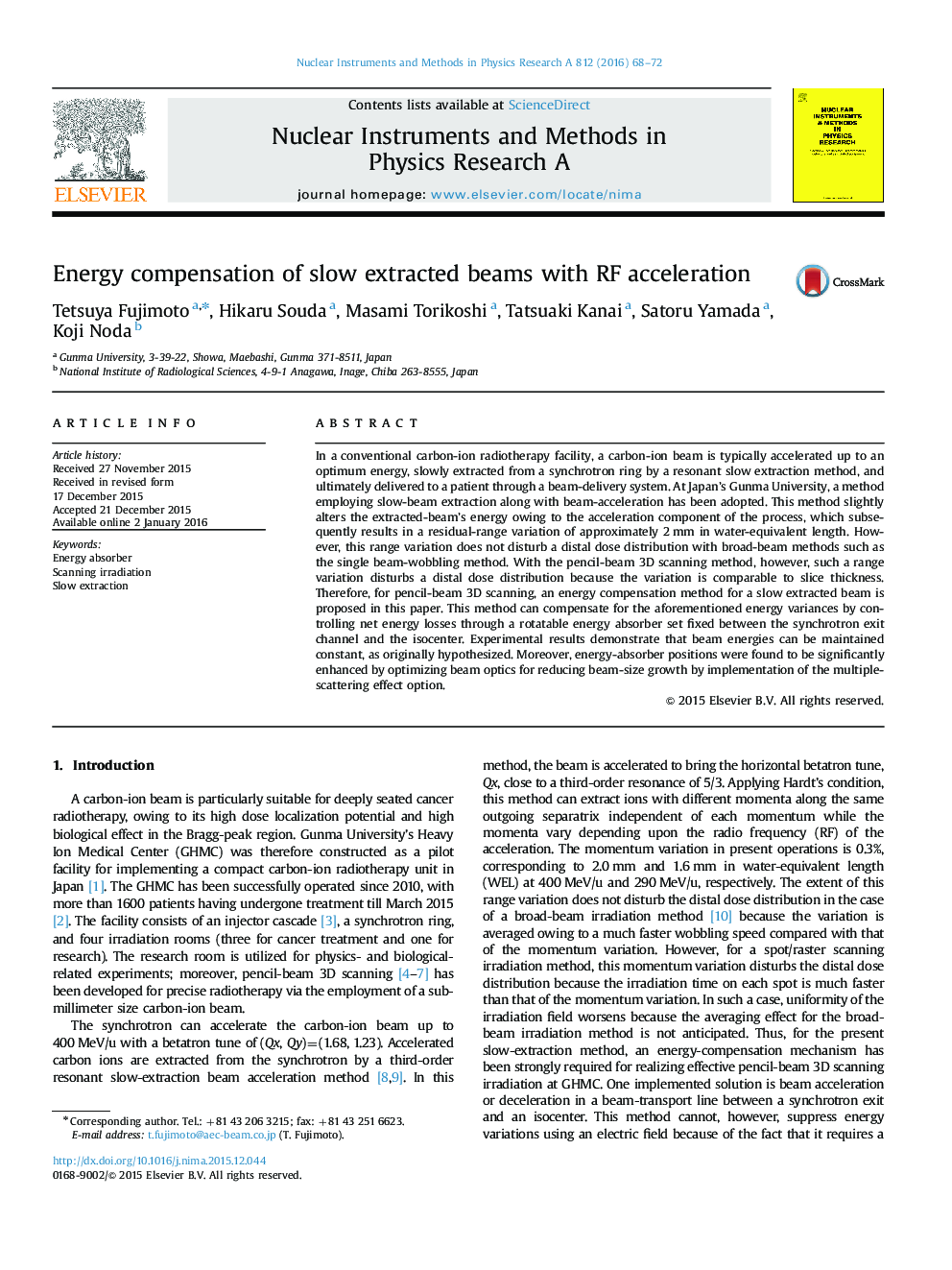| Article ID | Journal | Published Year | Pages | File Type |
|---|---|---|---|---|
| 1822111 | Nuclear Instruments and Methods in Physics Research Section A: Accelerators, Spectrometers, Detectors and Associated Equipment | 2016 | 5 Pages |
In a conventional carbon-ion radiotherapy facility, a carbon-ion beam is typically accelerated up to an optimum energy, slowly extracted from a synchrotron ring by a resonant slow extraction method, and ultimately delivered to a patient through a beam-delivery system. At Japan’s Gunma University, a method employing slow-beam extraction along with beam-acceleration has been adopted. This method slightly alters the extracted-beam’s energy owing to the acceleration component of the process, which subsequently results in a residual-range variation of approximately 2 mm in water-equivalent length. However, this range variation does not disturb a distal dose distribution with broad-beam methods such as the single beam-wobbling method. With the pencil-beam 3D scanning method, however, such a range variation disturbs a distal dose distribution because the variation is comparable to slice thickness. Therefore, for pencil-beam 3D scanning, an energy compensation method for a slow extracted beam is proposed in this paper. This method can compensate for the aforementioned energy variances by controlling net energy losses through a rotatable energy absorber set fixed between the synchrotron exit channel and the isocenter. Experimental results demonstrate that beam energies can be maintained constant, as originally hypothesized. Moreover, energy-absorber positions were found to be significantly enhanced by optimizing beam optics for reducing beam-size growth by implementation of the multiple-scattering effect option.
